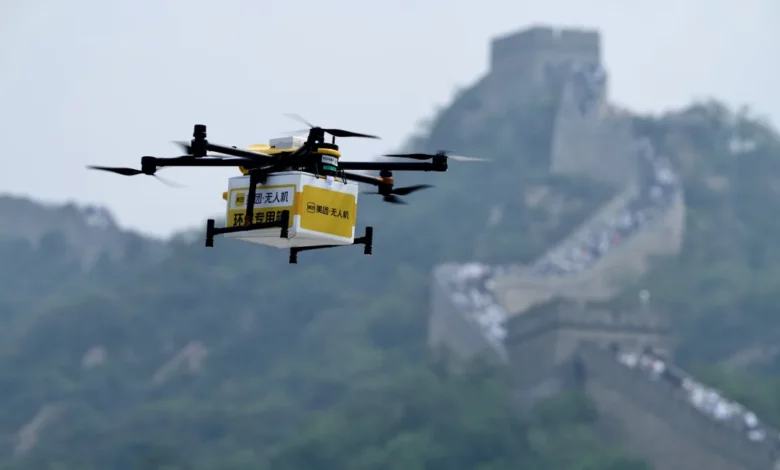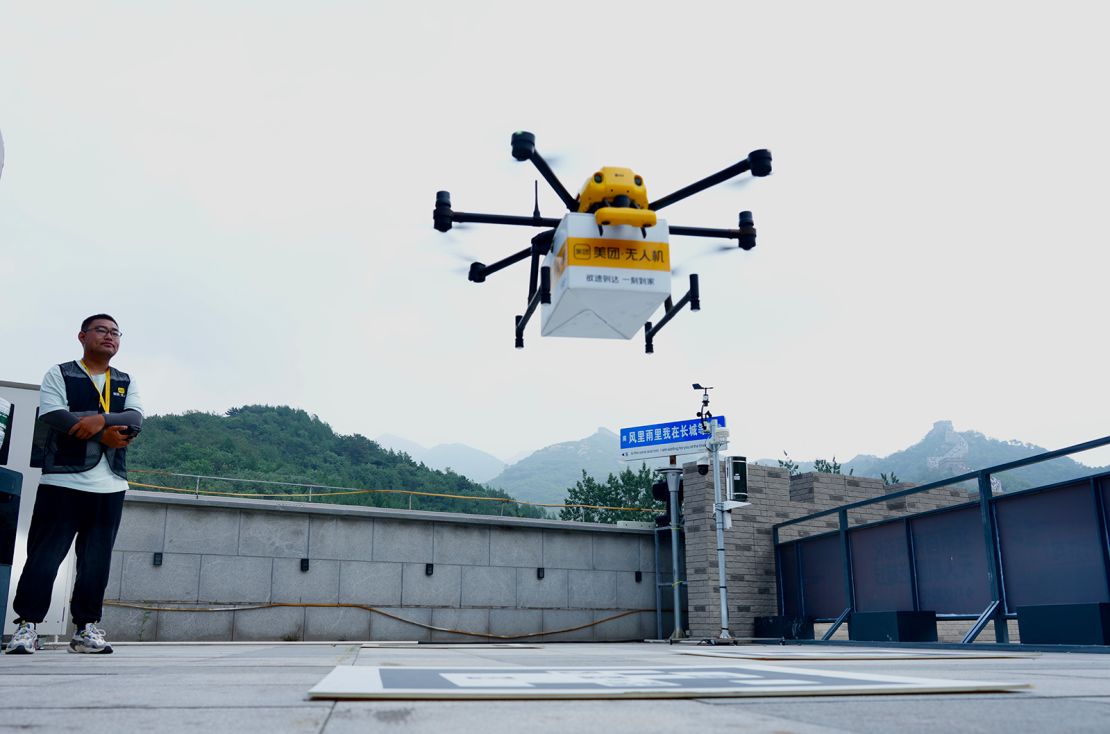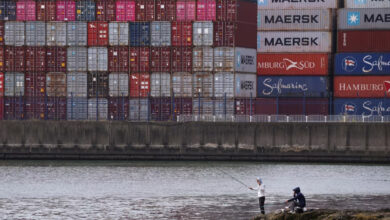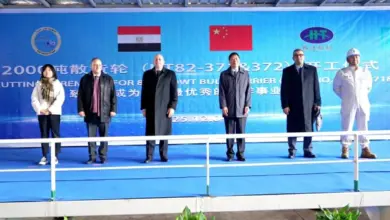
Hungry tourists hiking on the Great Wall of China can now get their lunch delivered – from the air.
Chinese food delivery giant Meituan says its new drone service, announced last week, will bring food, drinks and other goods such as medical supplies to customers at a far-flung section of the ancient monument on the outskirts of Beijing.
It’s the capital’s first drone service, adding to a fast-growing drone delivery business across China, which is the world’s largest manufacturer and exporter of civilian consumer drones. The industry has brought convenience to people living in both cities and hard-to-reach rural areas.
The Great Wall drone route extends from a nearby hotel rooftop to a watchtower on the southern extension of Badaling, the most popular section of the massive fortifications snaking across northern China.
Opened last year, the extension, which has preserved the ruined state of the ramparts on the wall, typically experiences sweltering summer temperatures and has no commercial facilities.
That’s where drones can help, according to Yan Yan, public affairs director of Meituan’s drone business.
“Through drones, we can make trips that take 50 minutes on foot in five minutes and deliver heat relief items and emergency supplies to visitors,” she told state broadcaster CCTV.
The drones can fly in moderate wind and rain and carry up to 2.3 kilograms (about 5 pounds) per trip, according to Meituan.
The drone delivery fee is just 4 yuan (56 cents), the same as regular Meituan deliveries, state-run Beijing Youth Daily reported. The service will take orders from 10 a.m. to 4 p.m., after which the drones will be tasked with carrying trash to recycling stations, the report said.
But the drones still need human help.
Once an order is received, a Meituan worker will pick it up from a nearby store and bring it to the hotel rooftop, where it will be weighed and packaged. An operator then attaches the package to the drone, which will fly on autopilot to the watchtower, where another worker waits to receive it.
App users can then pick up their package from the worker at the watchtower.

Flying business
Drone delivery services have expanded rapidly in China in recent years.
In 2016, e-commerce giant (JD) launched the first trial of unmanned aerial vehicles (UAV) for deliveries in the countryside. Carrying up to 15 kilograms over a maximum distance of 20 kilometers (about 12 miles), those drones shortened delivery times from four hours by car on winding mountain roads to just under 20 minutes, state-run news agency Xinhua reported at the time.
In addition to boosting rural logistics, drones are also increasingly used to fetch quick takeout for people living in China’s metropolises.
Meituan completed its first drone delivery in the southern tech hub of Shenzhen in 2021. It now operates more than 30 drone routes in multiple cities, which have handled more than 300,000 orders, including in the financial hub of Shanghai.
To navigate dense urban spaces, the drones follow predetermined routes from launch sites – usually rooftops – to pick-up points. Rather than hovering outside apartment or office windows, they drop off deliveries at kiosks near residential and office buildings, where customers can pick up their orders.
Since last year, Meituan has also set up pickup kiosks for drone deliveries in public parks in Shanghai and Shenzhen.
The expansion of drone delivery services comes amid a government push to develop the so-called “low-altitude economy,” referring to a wide range of businesses centered around manned and unmanned civil aerial vehicles below an altitude of 1,000 meters (3,281 feet).
The “low-altitude economy” was identified as a new growth engine for the Chinese economy for the first time in the central government’s work report in March.
CNN’s Joyce Jiang contributed reporting.




